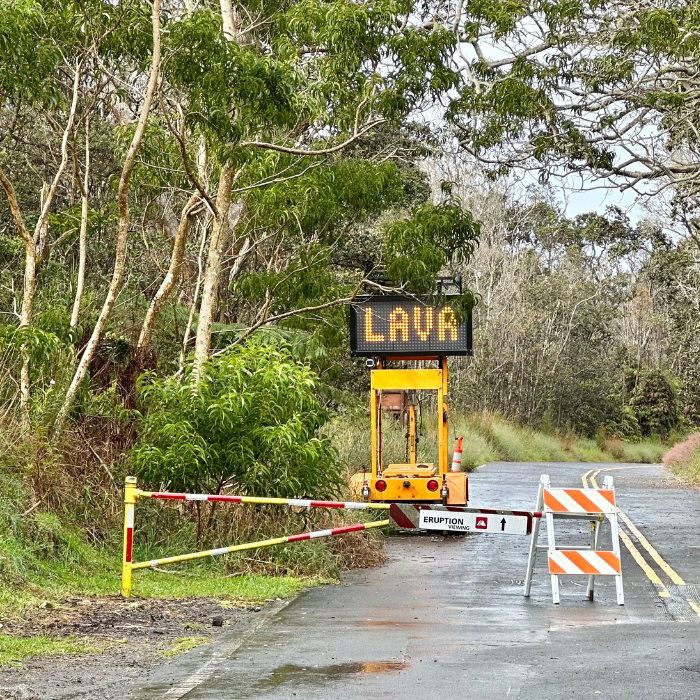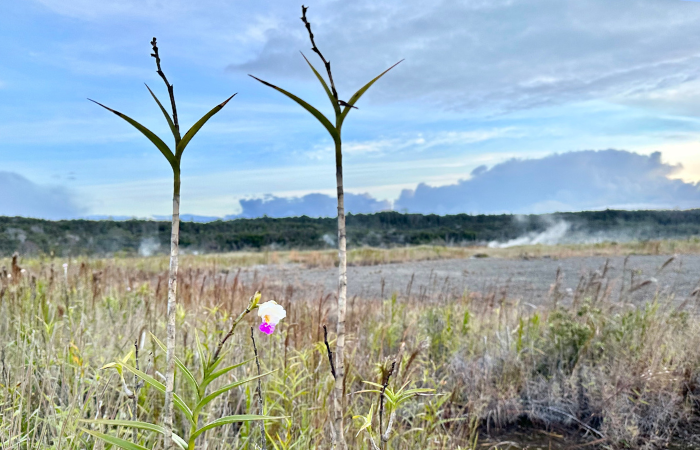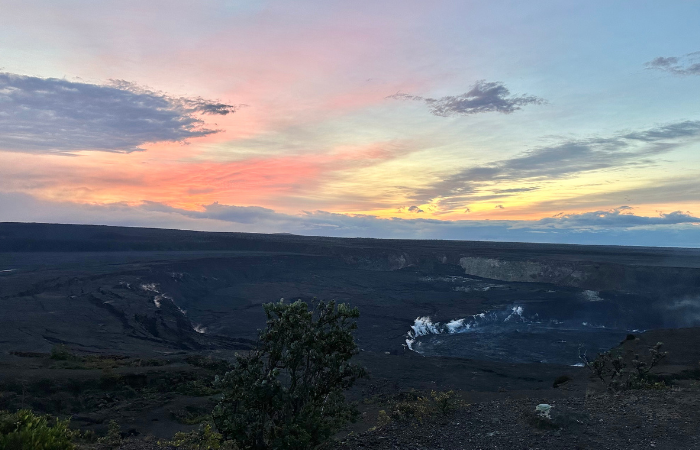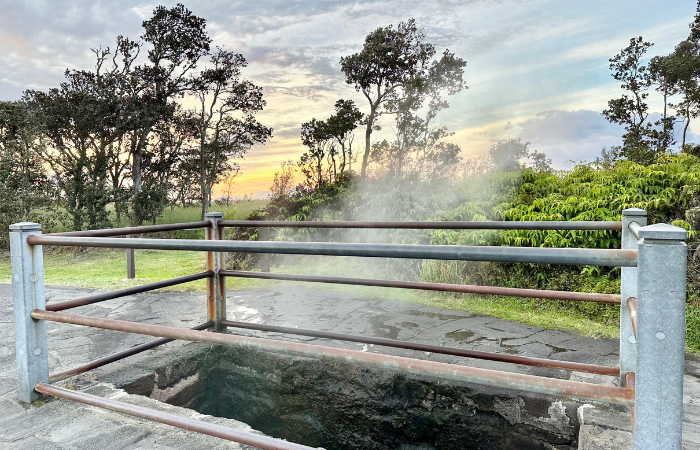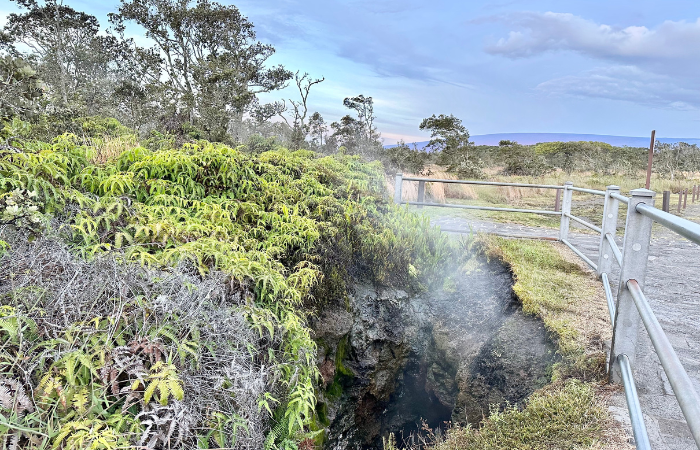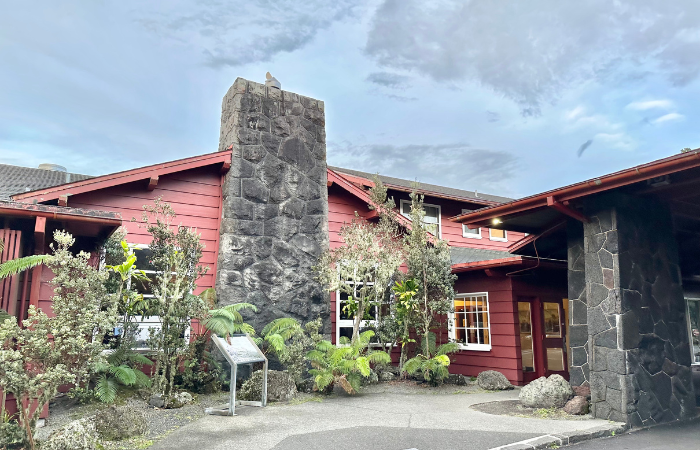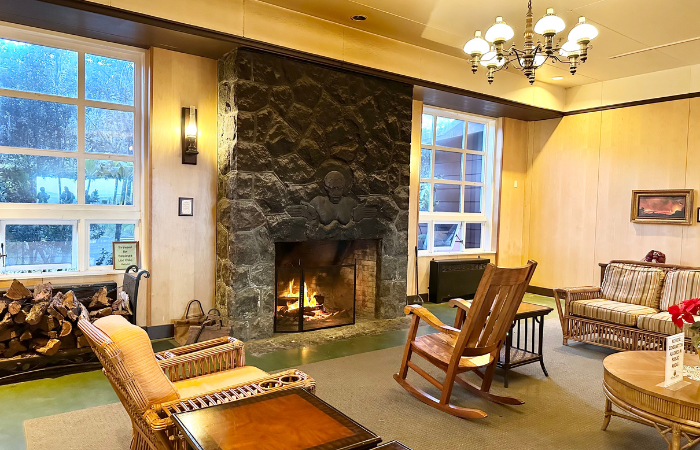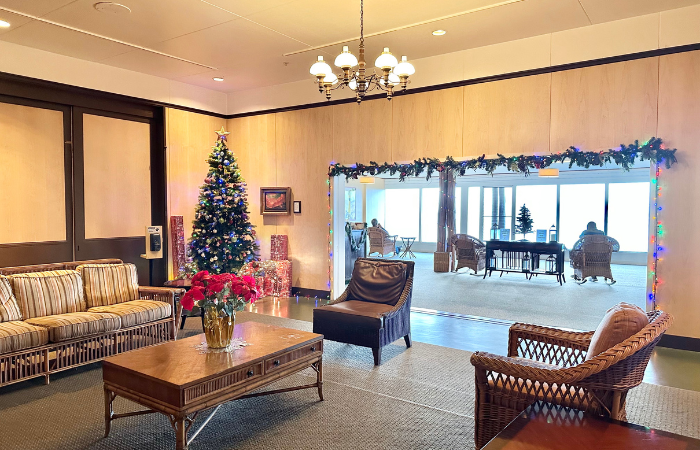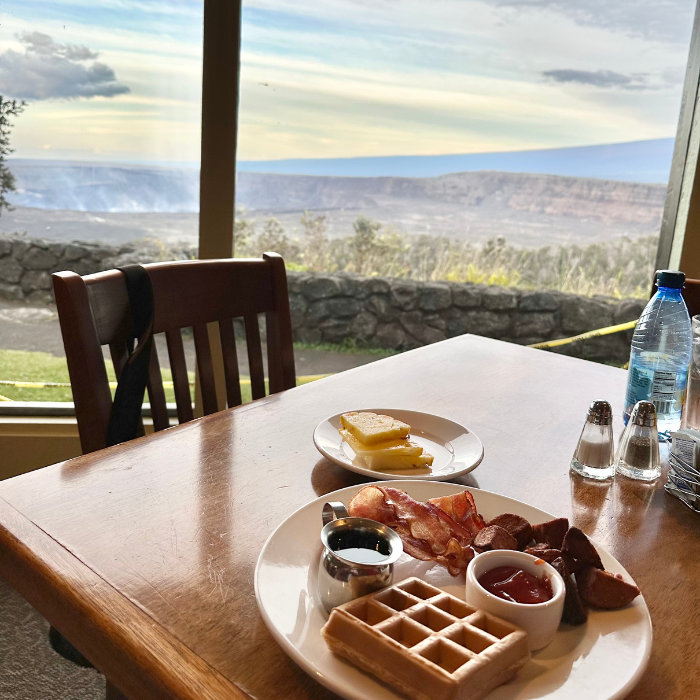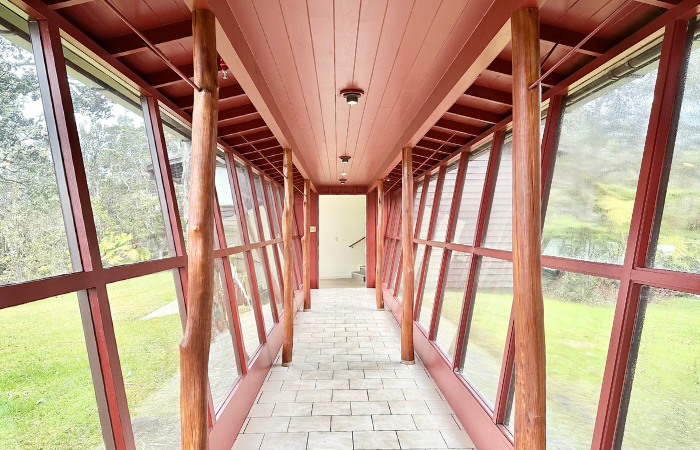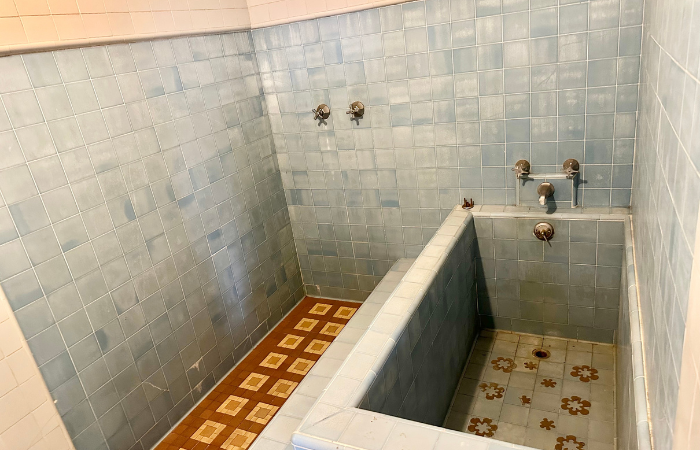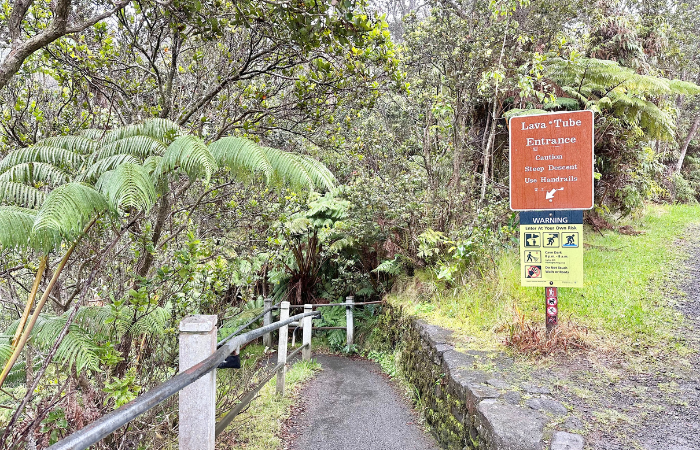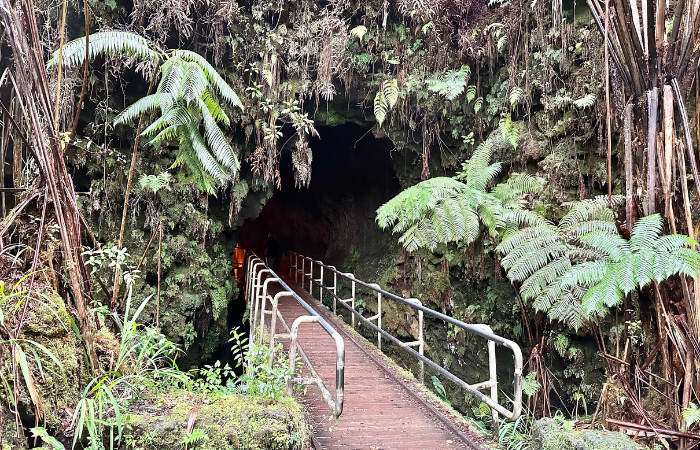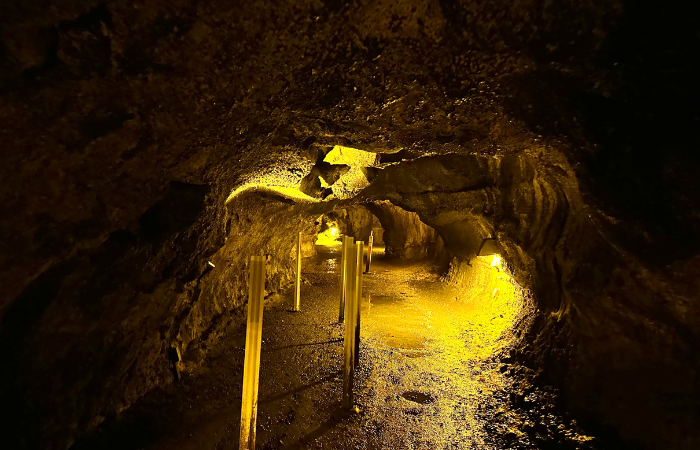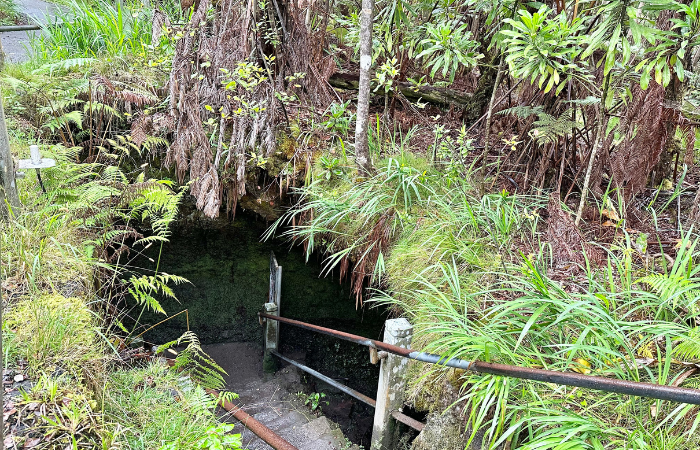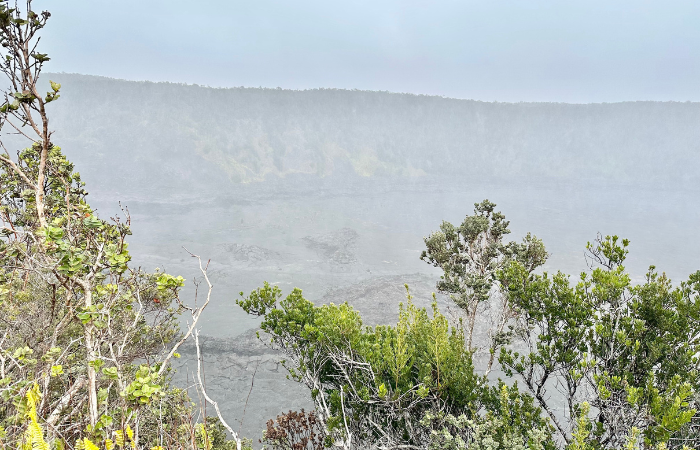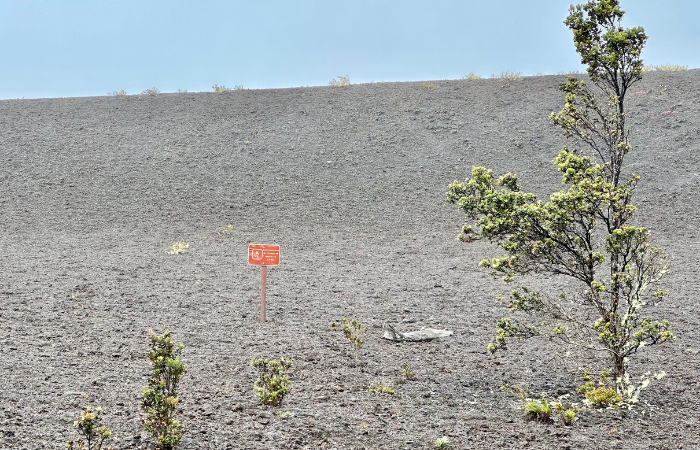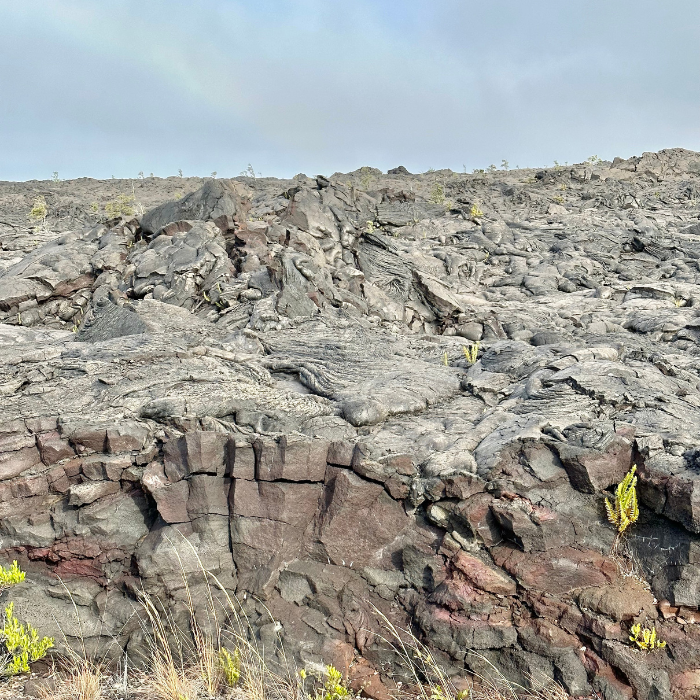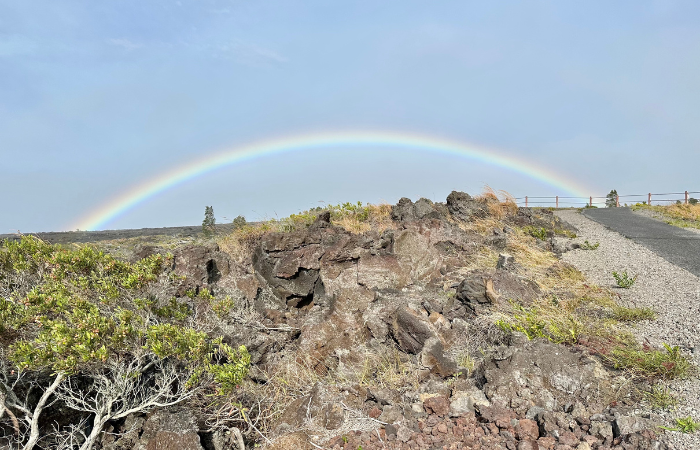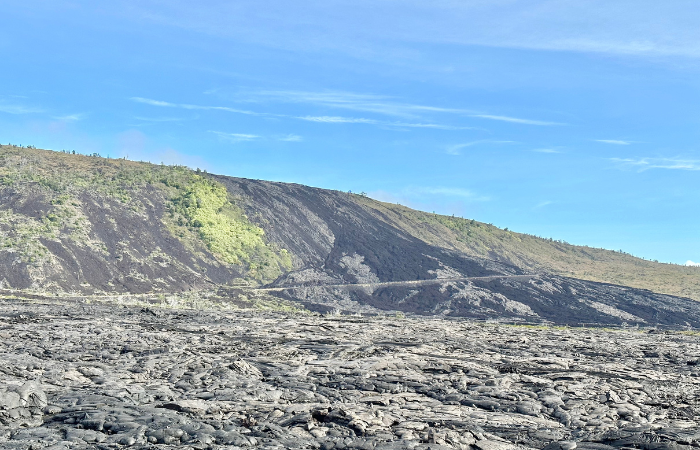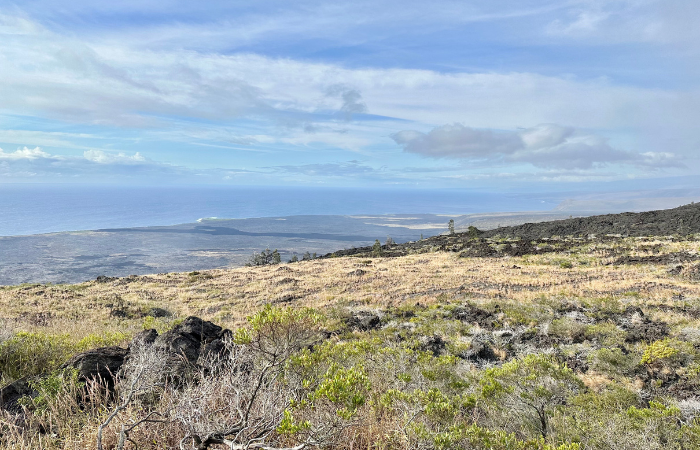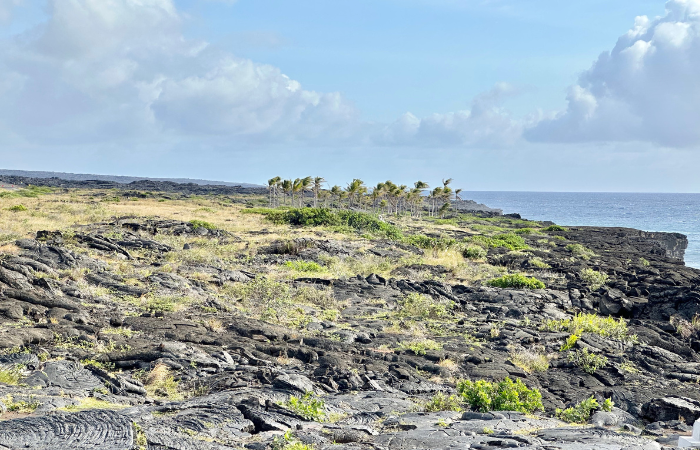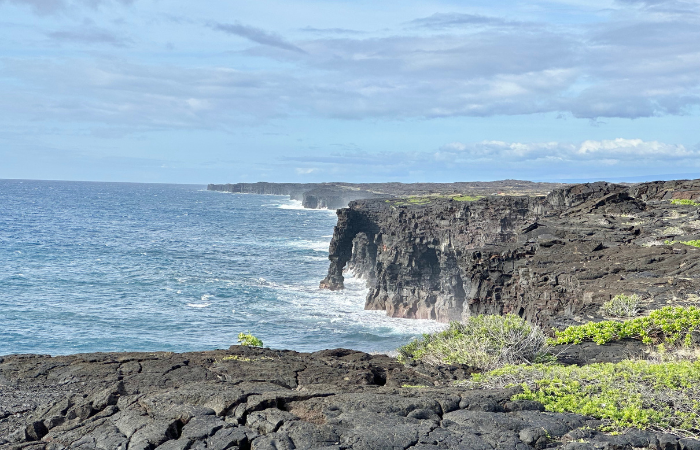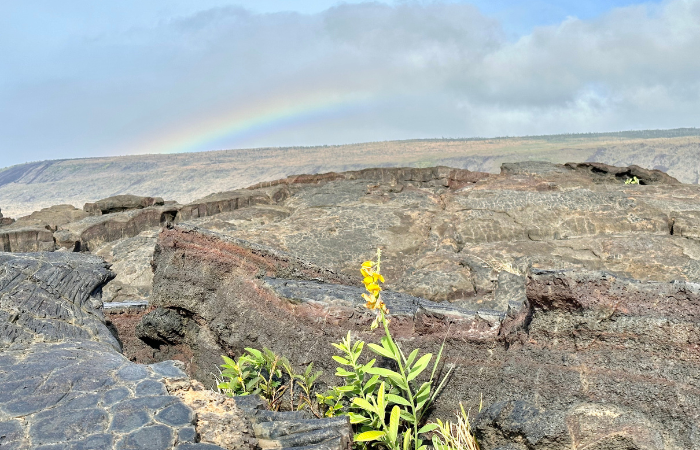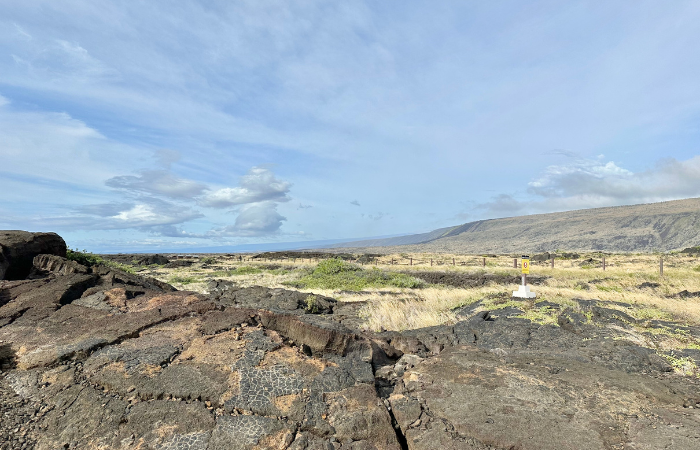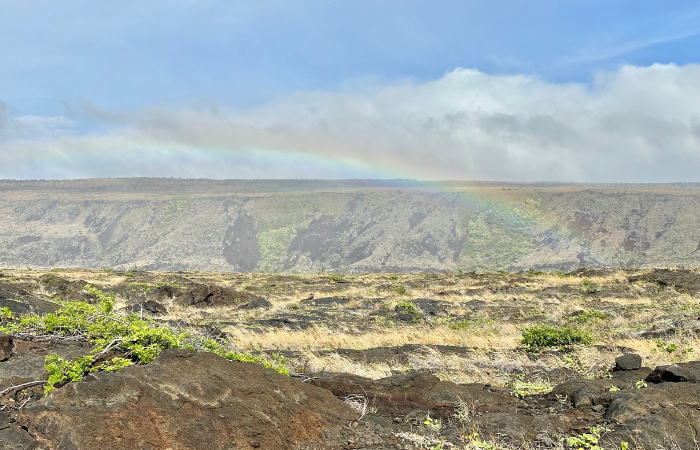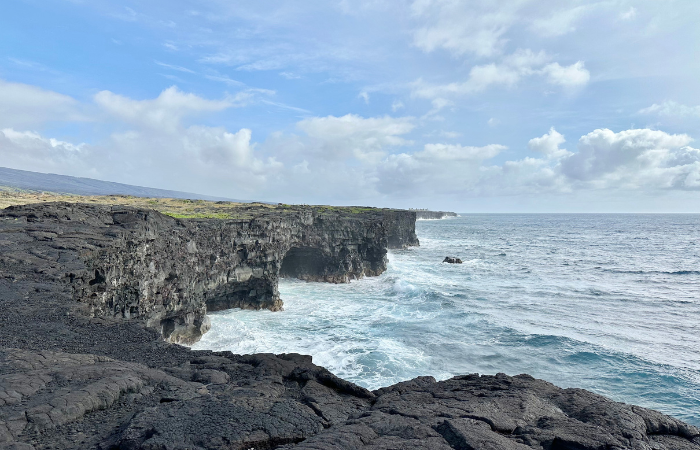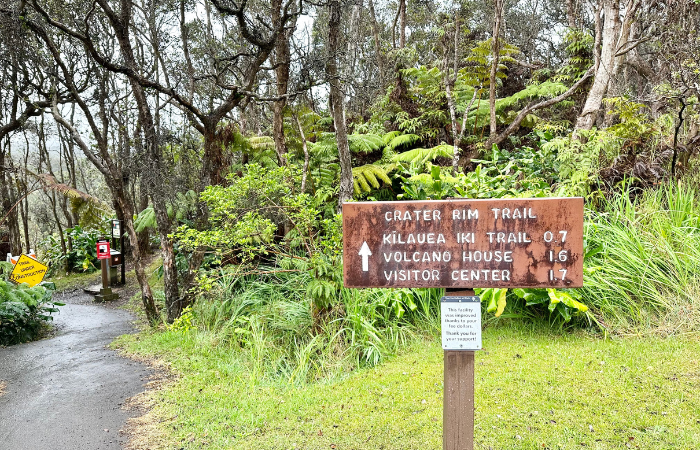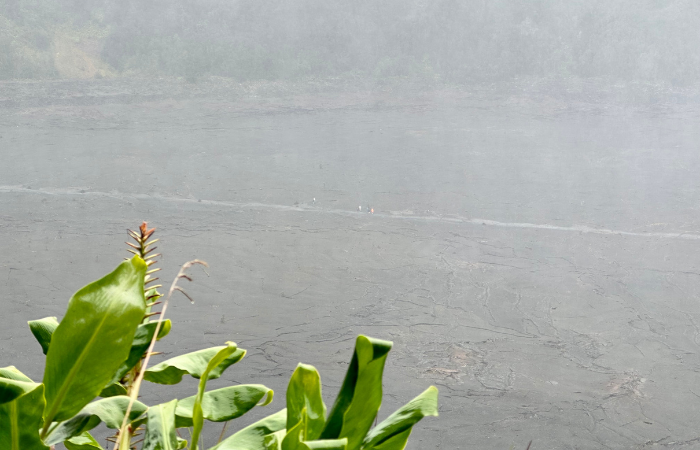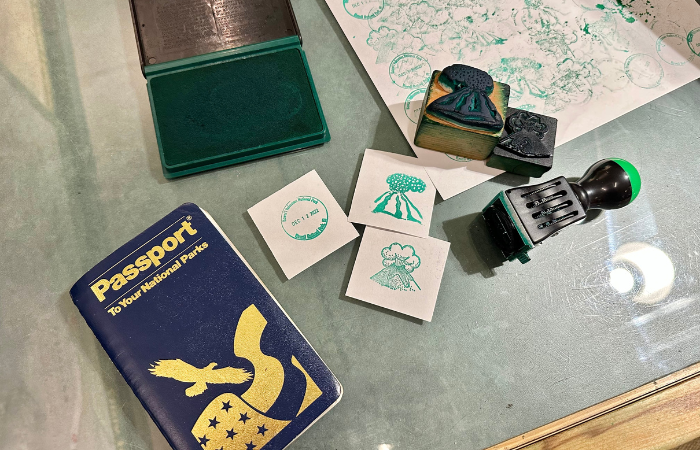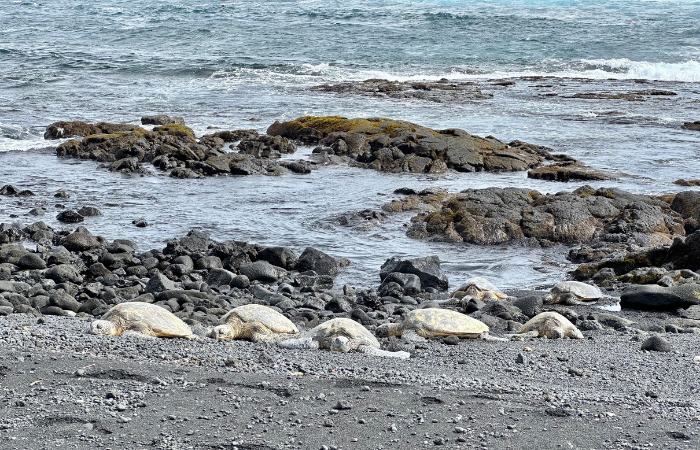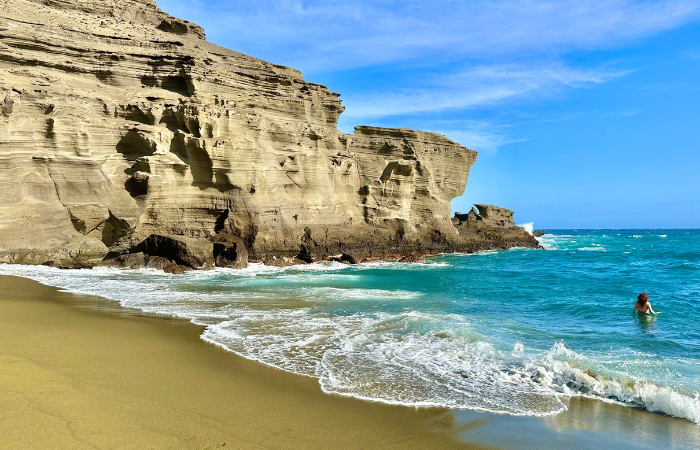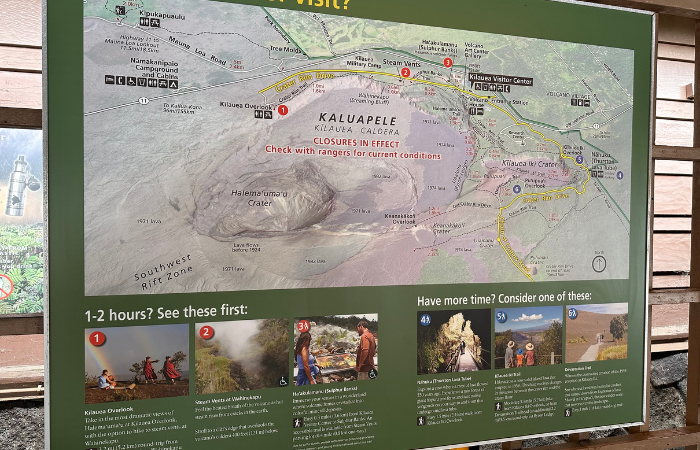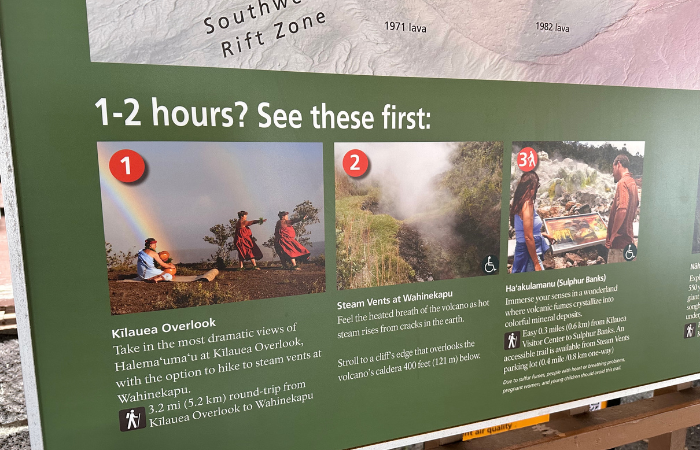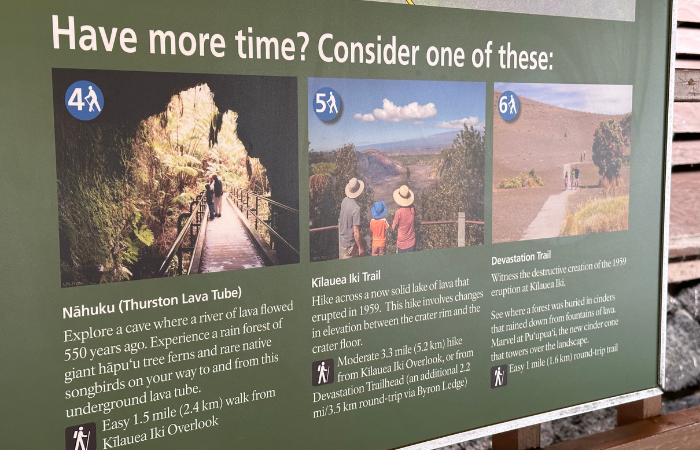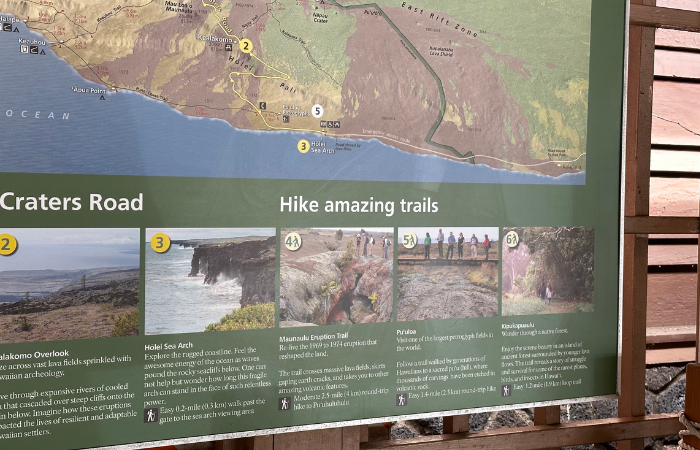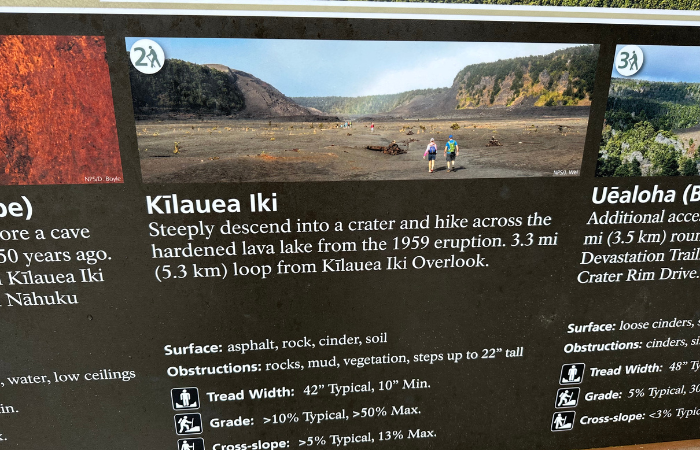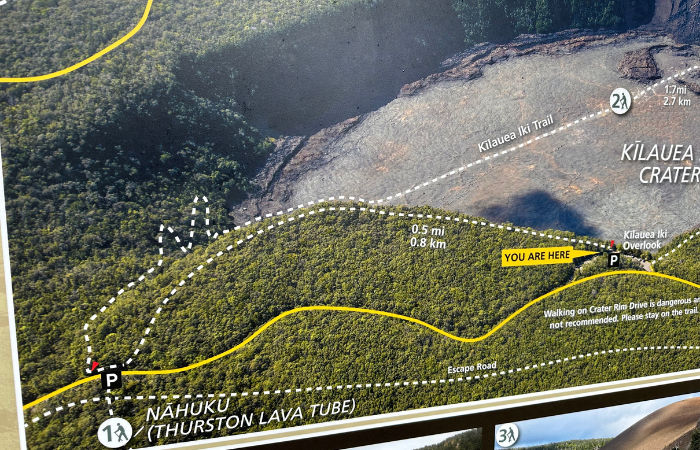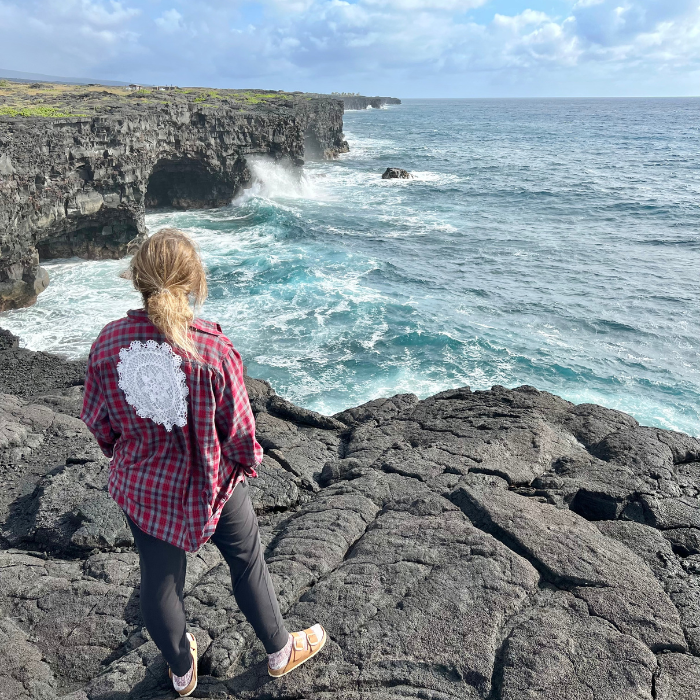Hawaii Volcanoes National Park One Day Itinerary: Lava or No Lava…Here’s What Not to Miss
If there’s ONE thing that draws people to the Big Island of Hawaii more than anything else, it’s Hawaii Volcanoes National Park. There just aren’t that many active volcanoes in the world, let alone ones that are safe to be around.
There are actually four active volcanoes on the Big Island: Mauna Kea last erupted about 5000 years ago, Hualalai last erupted in 1801 (Kona International Airport is built on top of its latest flow), and Mauna Loa (the world’s largest volcano) and Kilauea (the island’s youngest volcano) both saw impressive eruptions in 2022.
Mauna Loa and Kilauea are both in the National Park although most of what visitors are able to see and experience in the park centers around Kilauea.
Let me tell ya…we’ve been downright spoiled by Kilauea. From 1984 to 2018 there was a fairly continuous (and predictable) flow of lava coming out of Kilauea which made for pretty marvelous sightings.
You could hike to the lava flow, take a boat to see where it spilled into the ocean, and take a helicopter tour right over the top of it.
Since 2018, it’s been less predictable. Sometimes it’s SPECTACULAR and sometimes there’s not much going on on the surface.
In November 2022, Mauna Loa erupted for a few weeks (it had been quiet since 1984) and on almost exactly the same day in December 2022, BOTH volcanoes stopped erupting.
That’s the day I visited ; )
Currently (as of writing this in February 2023) there’s no active lava flow on the Big Island but there’s a lava lake at the summit of Kilauea (in the National Park) that is VERY visible.
But part of what makes this National Park so exciting is that it’s literally “alive.” And what happens can change in a moment.
But besides lava and active eruptions (which may or may not be happening during your visit), there is a LOT to see at Hawaii Volcanoes National Park.
On my latest trip to the Big Island, I spent a good bit of time in the National Park revisiting some favorite spots, exploring some new places, and taking so many notes for YOU.
If you love logistics, timelines, and details, this post is for you!
I’m going to tell you how I did this as a day trip driving over from Kona plus some suggestions from the park rangers, tips on what to wear, and extra things to round out your day.
Hawaii Volcanoes National Park One Day Itinerary
This post may contain some affiliate links, which means I’ll make a little money on anything you choose to purchase. But of course, I only recommend my absolute favorites to you. Thank you for supporting the brands that make HulaLand possible.
Here’s a timeline of how my day went:
4:00AM – We left our hotel in Kona (King Kamehameha’s Kona Beach Hotel) before the chickens were even awake. We drove south along Highway 19 but in retrospect I would’ve driven Saddle Road across the island. It’s about the same time but driving Saddle Road is a LOT easier (it’s basically a highway so no sharp turns, 25 MPH speed limits, etc.) and you can’t see anything in the dark anyways.
6:15AM – We arrived at Hawaii Volcanoes National Park and fumbled around a bit trying to figure out where to go to see the crater glow. I’d assumed we would just ask the park ranger at the entrance station, but we got there so early that it wasn’t even open yet.
We eventually figured it out (FYI it’s at Kilauea Overlook at the end of Crater Rim Drive) and made it to the overlook right at sunrise. Turns out that the crater had stopped “glowing” the day before and they officially announced that Kilauea had stopped erupting the next day.
It was still really beautiful and we could see quite a bit of steam coming off the crater, but no lava glow for us! BUT when there is a lava lake in Halemaʻumaʻu crater at the Kilauea summit, you definitely want to view it when it’s dark. So either arrive before sunrise or stay after sunset.
We spent about 30 minutes at the overlook.
6:45AM – We headed back towards Volcano House and stopped to check out the steam vents.
7:00AM – We stopped by Volcano House (the park’s original lodge) for breakfast and to look around. It’s been on my bucket list for a LONG time to stay here (I adore old National Park lodges) but I backed out on this trip after reading some recent reviews.
After seeing it in person, I think I’m okay just stopping by for a meal, BUT in the future if there was a spectacular eruption going on in the park I may do it just for proximity.
I would have LOVED to have seen Volcano House back in the 1960s. It has the feel of a place that was probably pretty swanky back in the day.
Anyways, we had breakfast in the restaurant and it was a nice place to kind of relax after being up so early, doing such a long drive, and standing out in the cold at the crater.
The breakfast is buffet style and it’s about $24/person which includes a drink. I honestly didn’t have very high expectations, but it was all pretty good. Some things (like the waffles) weren’t very warm but it all tasted really good and they have a great omelet bar.
While we were eating breakfast, clouds started to roll in and almost completely obstructed the view of the crater. It’s crazy how fast the weather changes in the park!
The view from the restaurant and lodge is basically the same as from Kilauea overlook but just from a different angle.
We poked around the lobby and hallways a bit after breakfast and stumbled upon the historic men’s steam room.
According to the sign: “When Volcano House was built in 1941, this room offered guests a chance to soak up Pele’s steam, provided through a tube in the floor. The tube opened to a natural steam vent in the ground below. A women’s steam room next door functioned the same way. An earthquake in 1984 caused the vents to shift and reduced the flow of steam into these two rooms to just a damp trickle. No longer steamy enough to draw guests, these rooms have been closed since then.”
***Want to save major $$$ on your trip to Hawaii? I get asked ALL the time how I’m able to travel so often to Hawaii and stay at really nice resorts. Well, my favorite travel hack is cashing in points to score free airfare and free nights at some of Hawaii’s most high end resorts. Read my full guide on the exact system I use to max out credit card rewards here. Seriously, it’s going to save you soooo much money.
8:00AM – We left Volcano House and headed to the Thurston Lava Tube. It’s one of the most popular places in the park and there’s limited parking, but one of the benefits of getting to the park so early was that there weren’t too many other people out and about yet.
This 500 year old lava tube was discovered in 1913 and it’s one of my favorite parts of the park. Lava tubes are created by underground rivers of molten lava (at temperatures over 2000 degrees!) and when the lava runs out or is diverted, it’s basically just a long cave.
This tube is lit on the inside from 8AM to 8PM so if you’re visiting outside of those hours you’ll need a flashlight.
Now…yes, the cave is very cool. But what I love most about this stop is the whole little hike to get in and out. I use the term “hike” loosely. It’s more like a stroll down a paved walkway. But it’s a beautiful tropical rainforest dripping with ferns and chirping birds.
It only took us about 15 minutes to go through the lava tube.
8:30AM – We spent a bit at the Pu’upua’i overlook and walked down Devastation Trail a little ways since it had been a viewing location for the Mauna Loa eruption.
8:45AM – We turned off Chain of Craters Road to drive all the way to the ocean. I was pretty excited to do this bit of the National Park because I’d never done it before.
Chain of Craters Road is absolutely littered with craters and lava flows from old eruptions and they’re all pretty well marked with the years when they happened.
Honestly, it was a little overwhelming and I kind of figured since we saw the big, current, active crater that was good enough for me. So since we had a FULL day planned, we just kept driving and enjoyed the views.
We stopped at the viewing platform at Kealakomo because it’s the first place where the view really opens up and you feel like you can see the whole island.
And we got lucky and saw a rainbow! It made all the cold, dreary weather we’d braved that morning worth it!
9:15AM – We made it all the way down to the ocean to see the Holei Sea Arch. At the end of the road, there’s a circle to turn around and park plus restrooms. The road beyond the barricade was taken out in a lava flow.
To get to the sea arch, you have to walk down the road past the barricade a hundred feet or so.
We spent some time in the area checking out different patterns of lava flow and some different lookout places before heading back up the way we came.
10:15AM – We made it back up to the top of the main part of the park and stopped at the Kilauea Iki overlook. We walked part of the Crater Rim Trail to check out the views.
We didn’t have time on this day, but on another visit I hiked the Kilauea Iki trail down to the crater floor and if you have an hour or hour and a half I completely recommend it. And if you can get a parking spot at the Thurston lava tube instead of the Kilauea Iki overlook, it’s a much shorter hike.
11:00AM – We stopped by the visitor center which is always a must do at a National Park. It wasn’t open when we came through the first time (I believe it opens at 9AM) so this was our first chance.
They have a great selection of stamps for your National Parks Passport and pretty good merch. Plus they had a couple of ranger programs scheduled for the day.
11:45AM – When we pulled out of the park there was a looooong double line of cars waiting to get in so it’s true what they say…the early bird really does get the worm!
So we spent almost six hours in the park and we could’ve spent longer (mainly to do the Kilauea Iki hike and see the sulfur banks) but also felt okay to move on to the next thing.
Side Note: If you’re looking for a rental car for your trip, I LOVE Discount Hawaii Car Rentals. They’re seriously the only company I ever use. They’ll give you the very best prices, you don’t have to reserve with a credit card or pay until you show up, you can cancel and re-book anytime if you find a better rate, and they usually have a special that adds additional drivers for no fee. It’s a no brainer. Click here to check rates for your trip.
Where to Next?
If you get an early jump on the day like we did and you’re ultimately heading back to Kona, you’ve got a couple of options. You could either 1) Go north up to Hilo, have lunch, see some waterfalls, and drive back across Saddle Road. Or 2) Go south and stop by the black sand beach at Punalu’u, and possibly even the green sand beach at Papakolea and drive back to Kona along the coast.
We went with option 2 and did Hilo on a different day.
If you go with option 2, here’s what you need to know…leave the park and head to Punalu’u Beach to see the dramatic black sand and the turtles. Then stop for lunch in Na’alehu at Hana Hou. It’s a GREAT lunch spot but they’re closed on Monday and Tuesday. And if you’re wanting to tack the green sand beach onto this day, the only way you’ll be able to do it logistically is if you do the $20/person “shuttle.” It’s almost a 6 mile round trip hike and there’s no way you’ll have time after doing everything else.
Alternatively, if you only want to do one big day. Limit your time in the National Park a bit, head south to Punalu’u then backtrack up north to have lunch in Hilo, see some waterfalls and drive back over Saddle Road.
Things I Would Do Differently (Or at Least Consider)
If the crater isn’t glowing, you don’t necessarily need to see it in the dark. Although it’s really beautiful and getting a jump start on the crowds is A+.
If you’re morally opposed to leaving Kona at 4AM ; ) but still want to see the glow (if it’s happening), maybe plan to shift your day back so you’re there for sunset instead.
I totally missed the Sulphur Banks which are supposed to be one of the top things to see in the park. They’re right by the visitor center and I think they’re so highly recommended because it’s an easy in/out thing to see without having to drive very far.
If you’re planning to make a full day of it, consider bringing a picnic lunch or going to the nearby town of Volcano to hit a food truck. Besides Volcano House, there isn’t any food or drink available in the park.
Definitely carve out some time to hike the Kilauea Iki trail down to the crater floor. I would squeeze it in where I mentioned it in the itinerary since you’ll have already done most everything in the park and know where you stand time wise.
Keep an eye on current conditions and deviate if there’s any lava on the ground to be seen! When there’s a lava flow, the best viewing locations aren’t always in the National Park (for Mauna Loa’s most current eruption the best place to view it was from Saddle Road in the middle of the island), but the park rangers will always have a game plan for the best viewing spots INSIDE the park.
And obviously…if lava is close enough it’s impressive all the time. But if you’re viewing it from a distance, it’s always more impressive in the dark.
If you’re planning on doing any after dark lava viewing, make sure you have warm clothes, a blanket, flashlights, headlamps, supplies, etc.
Advice from the Park Rangers
National Parks always have the best resources for prioritizing what to see, but I find that you often can’t find that information until you’re there in person. And I like to have a plan before I show up!
So I took plenty of photos to help you plan your day out…
What to Wear in Hawaii Volcanoes National Park
We laughed that we had an entire wardrobe in the backseat of our car the day we did this trip. BUT we ended up wearing pretty much everything we brought and had exactly what we needed all day.
Here’s what you need to know…
The main part of the park is at a pretty high elevation so it’s cooler than it is at the beach. It’s also often rainy/windy/dreary in general so it can feel even chillier and if you’re there when it’s dark it can be downright cold.
When we started off at 6AM at the crater, I had on jogger sweatpants, a t- shirt, a long sleeve flannel shirt, a thin/packable puffer coat with a hood, and thick socks with my sandals. I forgot my hat and gloves at the hotel and if I had them with me I probably would have worn them but I wasn’t miserable without them.
In the dark and windy, I was comfortable enough to stand out at the lookout for a while. If I hadn’t had my coat, I would’ve been pretty miserable. But for comparison sake…I do NOT like to be cold.
Also for comparison…if you’ve been to Maui and done Haleakala sunrise or been up to Mauna Kea summit, this is NOT that cold. The coldest it got was about 50 degrees (but the rain and wind made it feel colder).
After we warmed up at breakfast, I kept my outer coat on while we did the lava tubes and overlooks. It was definitely getting warmer, but raining a little harder so I kept the hood up for a little protection.
Once we started driving down Chain of Craters Road towards the ocean, the elevation drops and the temperature starts to rise.
Down at the sea arch, I just wore my flannel shirt.
Back up at the main part of the park, we broke out our rain jackets when we did a short hike. It was raining pretty steady, but too warm for a full coat.
And by the time we left, I probably would’ve been okay in pants and t-shirt or maybe even shorts.
So the name of the game here is LAYERS. Plus shoes you can hike in.
P.S. One of the reasons I’m able to travel to Hawaii so often is by using credit card points. And right now my go to travel card has a GREAT limited time sign up offer.
If you sign up for this Chase Sapphire Preferred card, you’ll get 100K bonus points to use on travel.
These are my favorite kind of travel points because they’re so flexible. You could…
Transfer them to Southwest or United to book round trip tickets to Hawaii.
Transfer them to Hyatt to book a stay at the Andaz Maui (such a great luxury resort!)
Transfer them to Marriott for a stay at one of my favorites like the Mauna Kea Beach Hotel, Royal Hawaiian, or Ritz Carlton Turtle Bay.
Or book a hotel through the Chase travel portal with a cash value of $1250.
The 100K bonus point offer is just for a limited time, so if you’re looking for the best travel card, sign up >> here.
P.P.S. Here’s one more really important thing you need to know before your Hawaii trip…
You’ve got your airfare, hotel, rental car and your big activities booked, so you should be good to go, right? Wrong!
Travel is BOOMING in Hawaii and a lot of state and national parks have instituted reservation systems at some of the island’s most popular spots to help manage the crowds and make things a little more sustainable.
That means that there are now over half a dozen sites (beaches, trailheads, etc.) that require advance reservations. And some sell out well before you arrive on the island so you really need to have some sort of a plan.
I recently saw somebody in a Hawaii travel group post in a panic that they didn’t know they had to make reservations for things in advance…they thought they could just show up and “go with the flow.” I was tempted to say, well, “as long as the flow doesn’t take you somewhere that requires reservations, you can!” ; )
But I don’t want YOU to be that person, so I’ve pulled together a list of all the places you need to reserve entry in advance (plus all the details on booking windows, price, links, etc.) and a handful of popular tourist hotspots that book out really far in advance too.
Get that info >> HERE

